Hurricanes are an unfortunate reality for Florida residents, and when one strikes, it leaves devastation in its wake. Naples, Florida, known for its beautiful coastline and vibrant community, has seen its share of powerful hurricanes, and recovery can be a long and complex process for homeowners. After the immediate danger has passed, homeowners are often left with overwhelming questions: What do I do next? How can I secure my home? Who do I call for help?
In this article, we’ll guide you through the essential steps homeowners in Naples and throughout Florida should take to recover after a hurricane. Whether you’re dealing with minor damage or significant destruction, these steps will help you secure your property, navigate the insurance process, and begin the road to recovery.

Step 1: Ensure Safety First
Before anything else, safety must be your top priority. Hurricanes can leave behind a host of hazards, such as downed power lines, flooding, structural damage, and debris. Before returning to your home, make sure it’s safe for you and your family.
What to Do:
- Check for Structural Damage: If your home has been compromised structurally (e.g., damaged walls, roof collapse, broken windows), do not enter until a professional has inspected it. If the structure is unsafe, it could collapse further, putting you at serious risk.
- Turn Off Utilities: If you suspect gas leaks, damaged electrical wiring, or water damage, immediately turn off the gas, electricity, and water supply. Contact your utility companies for guidance, or wait until a professional can inspect the premises. Never attempt to turn the utilities back on by yourself until you’re sure it’s safe.
- Avoid Floodwater: Floodwaters can contain hazardous chemicals, sewage, and other contaminants. Avoid wading through any standing water unless you’re wearing protective gear. Report any flooding to your local authorities for guidance on how to handle it safely.
- Watch for Hazards: Be cautious of downed power lines, broken glass, exposed nails, and other debris around your home. Keep children and pets away from debris until it can be safely cleared.
Emergency Services and Resources:
- Local Emergency Services: If you need help, contact emergency services in Naples or Collier County by dialing 911.
- Collier County Emergency Management: For the most up-to-date information, click here.
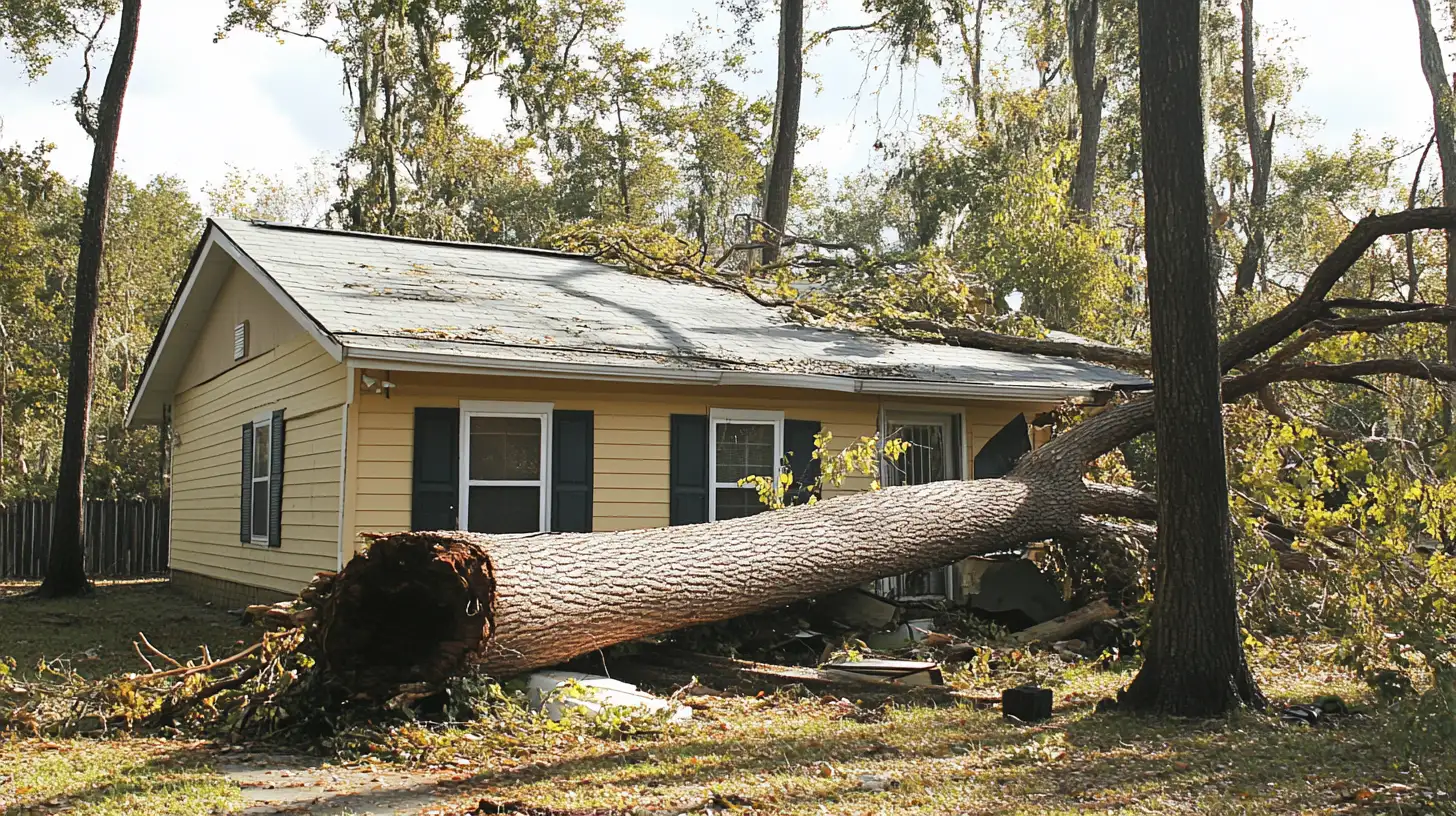
Step 2: Document the Damage
Once it’s safe to return to your property, the next crucial step is to document all damage thoroughly. This documentation will be essential when filing your insurance claim, as it helps the insurer understand the extent of the damage and ensures that your claim is processed efficiently.
How to Document Damage:
- Take Photos and Videos: Capture clear, high-resolution photos and videos of the damage to both the exterior and interior of your home. Focus on structural damage, roofing, windows, flooring, and any belongings that were damaged. Get close-up shots as well as wider-angle views to show the extent of the damage.
- Make an Inventory: Create a list of damaged items, including furniture, electronics, appliances, and personal belongings. For each item, note its approximate value, purchase date, and the extent of the damage. If you have receipts for any major purchases, gather them as well.
- Don’t Clean Up Yet: Avoid cleaning up too much before documenting the damage. Leave debris, broken items, and water damage untouched until you have thoroughly documented everything. Insurance adjusters may need to see the damage as-is to assess your claim.
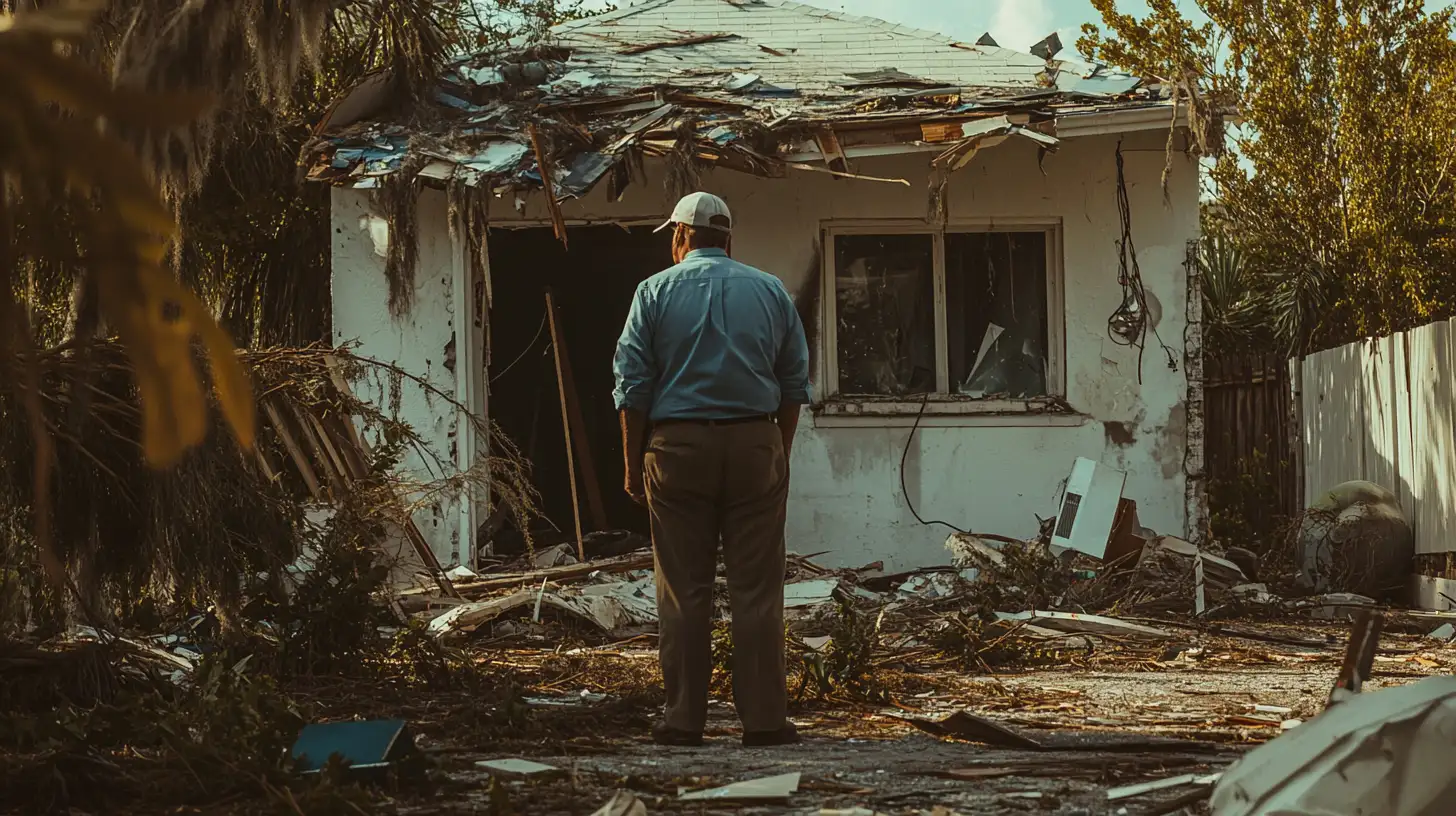
Step 3: Contact Your Insurance Company
After you’ve documented the damage, the next step is to contact your insurance company. Hurricanes can cause significant destruction, and it’s essential to start the claims process as soon as possible to avoid delays. Your insurance company will guide you through the steps required to process your claim and receive reimbursement for repairs and damages.
What to Expect When Filing a Claim:
- Contact Your Insurer: Reach out to your homeowners insurance provider as soon as possible after the storm. Many insurers have 24-hour hotlines to handle disaster claims. Provide them with an overview of the damage, but hold off on detailed descriptions until you have an adjuster visit.
- Prepare Your Documents: You’ll need to provide documentation, including your photos, videos, and inventory list. Your insurance company may also request receipts for major purchases, home repairs, and renovation work done before the storm.
- Schedule an Adjuster Visit: Your insurance company will assign an adjuster to inspect your property and assess the damage. Be present during the adjuster’s visit to answer questions and provide additional information. Keep notes on their findings and ask for a copy of their report.
Avoid Common Insurance Claim Mistakes:
- Don’t Wait Too Long: The sooner you start your claim, the faster you can get reimbursed for repairs. Many policies have time limits for filing claims, so don’t delay.
- Read Your Policy Carefully: Review your homeowners insurance policy to understand what is covered. Many policies have hurricane deductibles, which may be higher than the standard deductible.
- Document All Communication: Keep a record of all communication with your insurance company, including phone calls, emails, and letters. This can help in case there are any disputes or delays during the claims process.
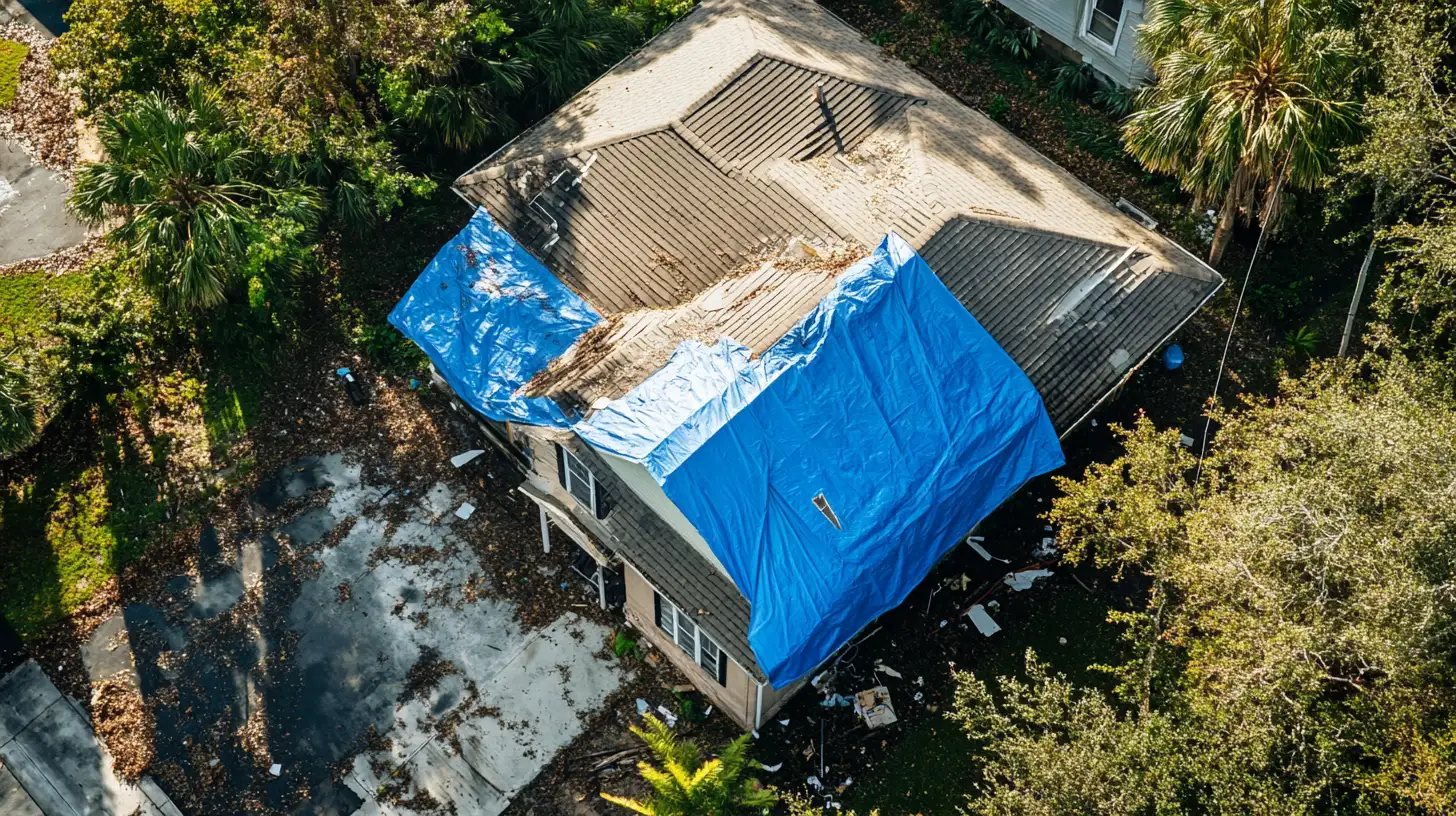
Step 4: Prevent Further Damage
While waiting for your insurance claim to be processed, it’s crucial to take steps to prevent further damage to your property. Insurance policies generally require homeowners to mitigate additional damage as much as possible, so making temporary repairs is essential.
How to Make Temporary Repairs:
- Cover Roof Damage: If your roof has been damaged, use tarps or heavy plastic sheeting to cover any exposed areas. This will prevent rain from causing further water damage.
- Board Up Broken Windows: Use plywood to cover broken windows or doors, preventing additional rain or debris from entering your home.
- Dry Out Water-Damaged Areas: If your home experienced flooding or water damage, begin drying out the affected areas as soon as possible to prevent mold growth. Use fans, dehumidifiers, and wet/dry vacuums to remove moisture.
- Save Your Receipts: Keep receipts for any materials or labor used in temporary repairs, as your insurance company may reimburse you for these costs. However, avoid making permanent repairs until the insurance adjuster has evaluated the damage.
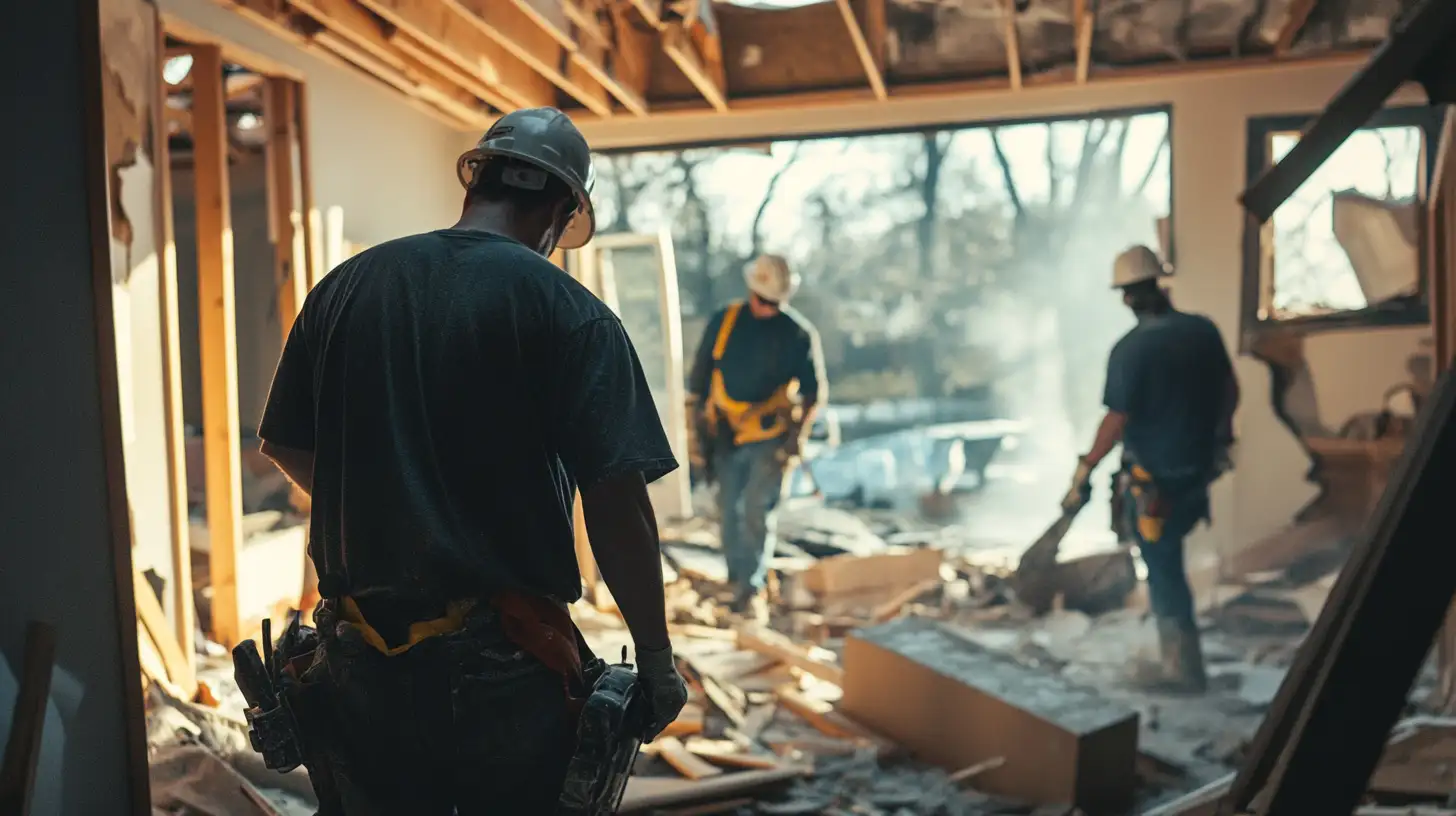
Step 5: Hire a Trusted Contractor
Once you’ve filed your insurance claim and made temporary repairs, it’s time to start thinking about permanent repairs and rebuilding. Hiring a reputable contractor is one of the most critical steps in the recovery process, but it can also be tricky—especially after a widespread disaster when contractors are in high demand.
Tips for Hiring a Reputable Contractor:
- Research Thoroughly: Look for licensed, insured, and experienced contractors who specialize in hurricane damage repair. Check online reviews, ask for recommendations from friends or neighbors, and verify their credentials through the Florida Department of Business and Professional Regulation.
- Get Multiple Estimates: Don’t settle for the first contractor who knocks on your door. Get estimates from several contractors to compare pricing, timelines, and services offered.
- Beware of Fraud: Unfortunately, natural disasters often attract fraudulent contractors looking to take advantage of homeowners in distress. Be wary of contractors who ask for large upfront payments or pressure you into signing a contract quickly. Never pay the full amount until the work is completed to your satisfaction.
Red Flags to Watch Out For:
- Unlicensed contractors.
- Contractors who require full payment before starting work.
- Offers that seem too good to be true, such as unusually low estimates.
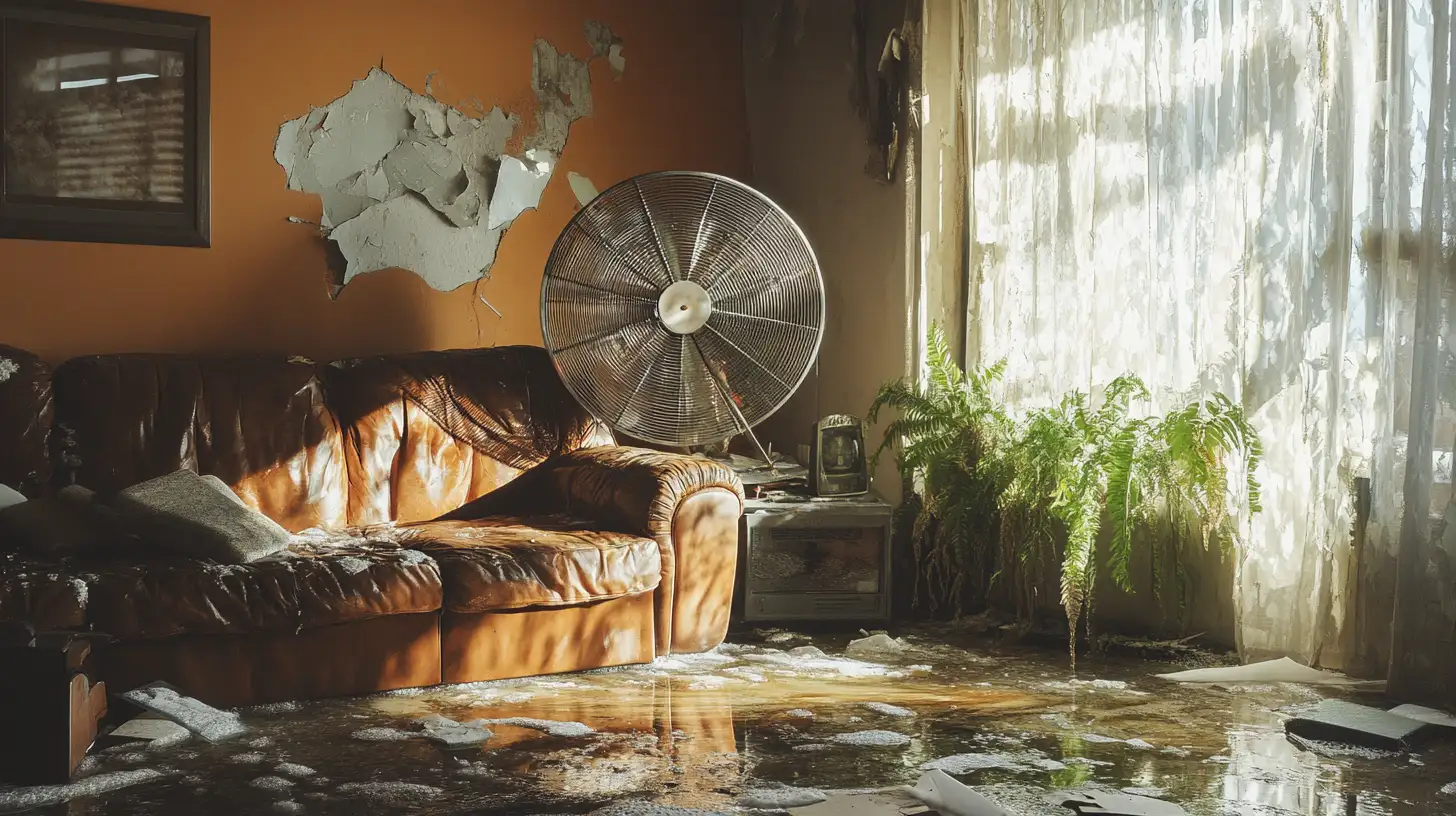
Step 6: Clean Up and Salvage
The cleanup process after a hurricane can be overwhelming, especially if there’s extensive debris or water damage. However, starting the cleanup process is a vital step in moving toward recovery.
How to Safely Clean Up:
- Remove Debris: Work with your city or county’s waste management services to remove large debris, such as fallen trees, damaged furniture, and construction materials. Be sure to follow local guidelines on waste disposal, as some items may require special handling.
- Handle Water Damage: If flooding has occurred, use a wet/dry vacuum or pumps to remove standing water. Mold can start to grow within 48 hours, so it’s essential to act quickly. Discard any items that cannot be salvaged, such as soaked carpeting or upholstered furniture.
- Salvage What You Can: Assess what belongings can be saved and what needs to be discarded. Items such as clothing, books, and some furniture may be salvageable with professional cleaning. Appliances and electronics that have been exposed to water may need to be replaced.
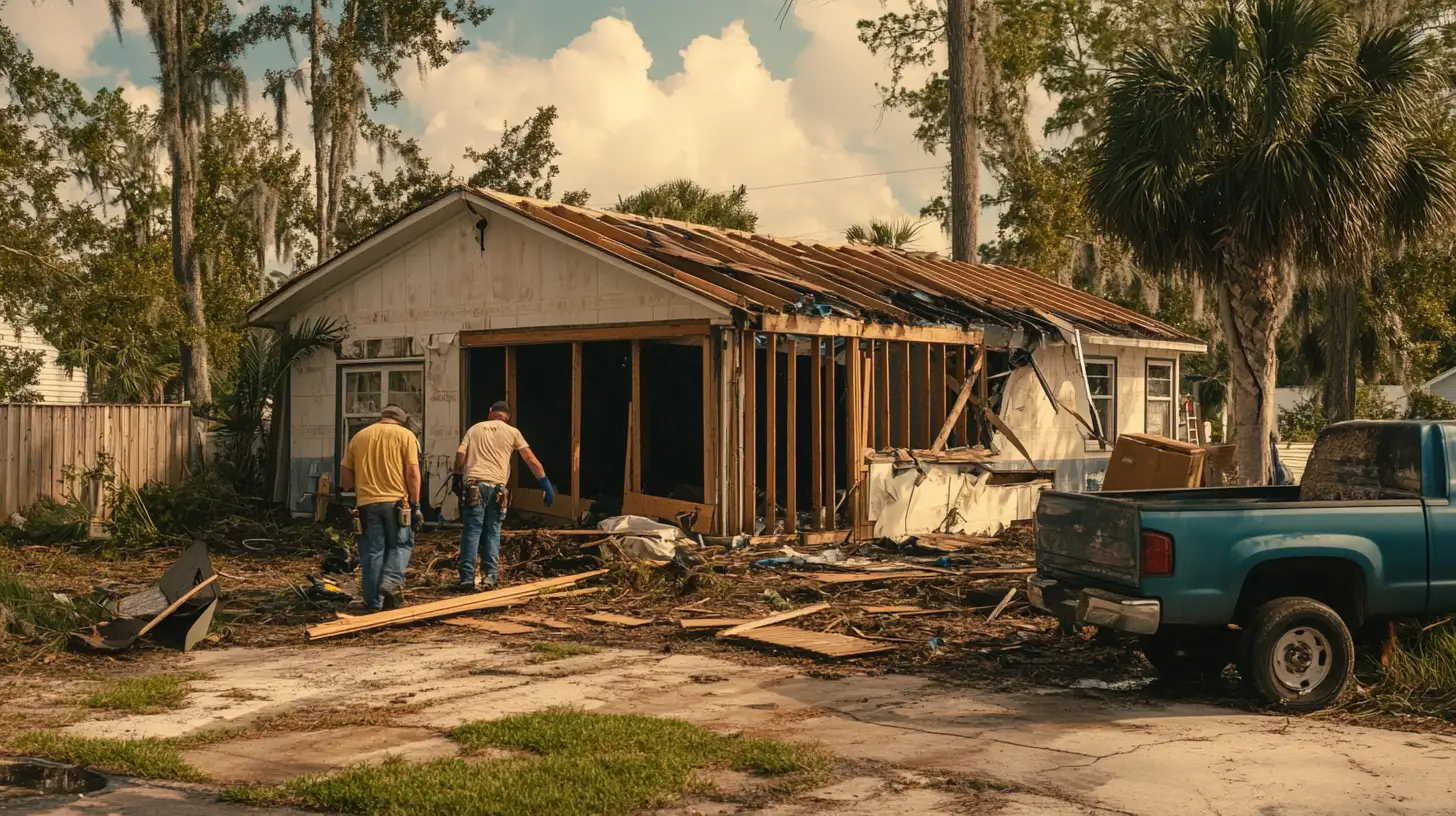
Step 7: Apply for Assistance
In addition to your insurance coverage, many federal, state, and local programs offer financial assistance to help homeowners recover from hurricanes. Applying for assistance can help cover expenses that insurance doesn’t fully reimburse.
Resources for Homeowners:
- FEMA Assistance: The Federal Emergency Management Agency (FEMA) offers disaster assistance to homeowners affected by hurricanes. This includes grants for temporary housing, home repairs, and other disaster-related expenses.
- Florida State Assistance: The state of Florida may provide additional disaster recovery resources, including housing assistance and rebuilding grants. Check with the Florida Division of Emergency Management for updates on available programs.
- Local Nonprofits and Charities: Organizations such as the American Red Cross and Habitat for Humanity often offer help to homeowners in need of repairs or financial assistance after a hurricane. Be sure to explore local nonprofits that may be offering support in the Naples area.

Step 8: Prepare for the Future
While recovering from a hurricane can be a long and emotional process, it’s also an opportunity to better prepare for future storms. Living in Florida, hurricanes are a part of life, and by making strategic improvements and planning, you can help safeguard your home, protect your family, and minimize damage when the next storm comes. Investing in home upgrades and creating an emergency plan now will give you peace of mind and better position your property for resilience in the face of future storms.
Steps for Future Preparedness:
1. Install Hurricane Shutters or Impact-Resistant Windows
One of the most effective ways to protect your home from hurricane damage is by installing hurricane shutters or impact-resistant windows. These upgrades prevent debris from breaking windows, reduce the risk of water damage, and help preserve the structural integrity of your home during high winds.
- Hurricane Shutters: These shutters are specifically designed to cover windows and doors, protecting them from flying debris. They are easy to install before a storm and can be removed once the threat has passed.
- Impact-Resistant Windows: While more expensive, impact-resistant windows are a permanent solution. These windows are made with reinforced glass that can withstand the force of debris and high winds, providing continuous protection year-round.
2. Reinforce Your Roof
Your roof is your home’s first line of defense against a hurricane. By ensuring it is securely anchored and in good condition, you can significantly reduce the risk of it being torn off or damaged during a storm.
- Roof Straps or Clips: Strengthen the connection between the roof and the walls of your home by installing roof straps or clips. These metal brackets secure the roof to the house, preventing it from being lifted off by high winds.
- Routine Roof Inspections: Regularly inspect your roof for wear and tear, especially after each hurricane season. Address any loose shingles, leaks, or weak spots immediately to prevent further damage.
3. Improve Flood Defenses
If your home is located in a flood-prone area, consider taking additional steps to prevent water damage. Flooding can cause extensive damage to your property, and taking precautionary measures now can save you money and heartache in the future.
- Elevate Electrical Systems and Appliances: Keep electrical systems like fuse boxes, outlets, and wiring elevated above potential flood levels. Consider raising appliances such as water heaters, washers, and dryers onto platforms to prevent damage.
- Install Sump Pumps: A sump pump can help remove water that accumulates in your home’s foundation or basement. Choose a pump with a battery backup to ensure it works even if the power goes out during a storm.
- Seal Cracks and Gaps: Inspect your home’s foundation, walls, and windows for any cracks or gaps that could allow water to seep in. Seal these areas with waterproof caulk or other materials to reduce the risk of water intrusion.
4. Create an Emergency Kit
An emergency kit is a must for every household, especially in hurricane-prone areas like Florida. Your kit should include enough supplies to sustain your family for at least 72 hours in case of a power outage or if you are cut off from essential services.
Items to include in your kit:
- Non-perishable food and bottled water (one gallon per person per day)
- Flashlights, batteries, and battery-powered radio
- First-aid kit and essential medications
- Copies of important documents (insurance policies, ID, medical records) in a waterproof container
- Cash (in small denominations, as ATMs may not work)
- Emergency blankets, rain gear, and extra clothing
Having this kit readily available ensures that you and your family are prepared for any emergencies that may arise in the immediate aftermath of a storm.
5. Develop a Family Emergency Plan
An emergency plan ensures that every family member knows what to do and where to go in the event of a hurricane. It’s especially important if your family is separated when a storm approaches, or if evacuation becomes necessary.
Key elements of a family emergency plan:
- Designated Meeting Spot: Establish a safe place where family members can meet if they are separated. This could be a neighbor’s home, a local shelter, or a community center.
- Evacuation Routes: Map out multiple evacuation routes from your home, and identify local shelters in case you need to leave quickly.
- Emergency Contacts: Share a list of important phone numbers, including those of family members, local shelters, and emergency services. Make sure everyone in your family knows how to contact one another in case communication systems go down.
- Pet Care Plan: If you have pets, include them in your emergency plan. Know which shelters accept animals or have a pet-friendly evacuation strategy in place.
By planning ahead and making these improvements to your home, you can be better prepared for the next hurricane season, minimizing risk and ensuring that your family is safe and ready to respond.
Conclusion
Recovering from a hurricane can be a challenging and emotional process for homeowners, but by taking the right steps, you can restore your home and regain a sense of normalcy. From ensuring safety and documenting damage to filing insurance claims and hiring trusted contractors, following these steps will guide you through the recovery process.
It’s also essential to focus on future preparedness. With hurricane shutters, roof reinforcements, and an emergency plan in place, you’ll be better equipped to handle the next storm that comes your way. Being proactive now can save you significant time, money, and stress in the future.
At Paradise Coast Title & Escrow, we understand the unique challenges that homeowners face in the aftermath of hurricanes. We are here to help you with any title or escrow-related issues that may arise during property damage claims, as well as provide support and guidance as you navigate the recovery process.
